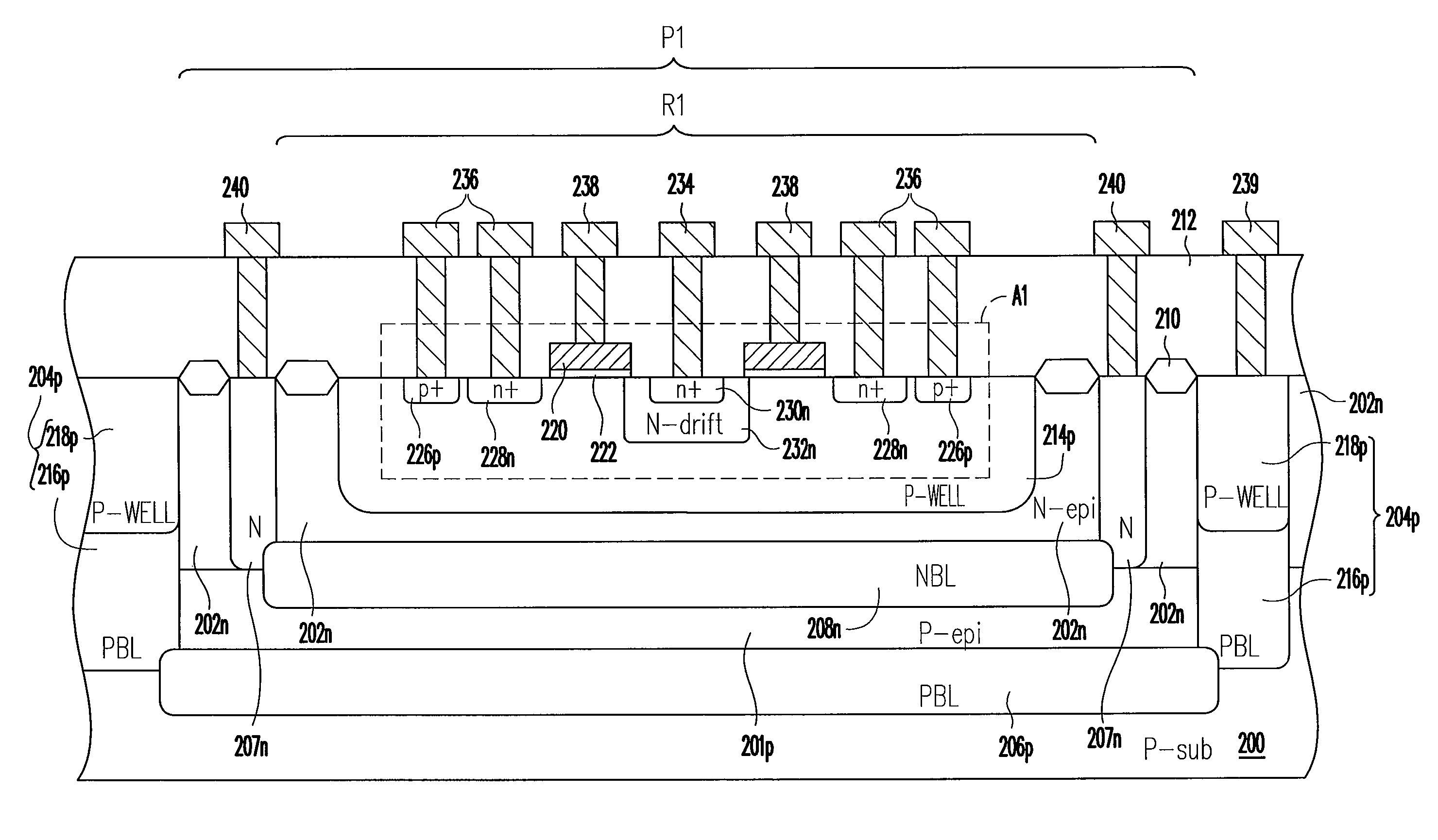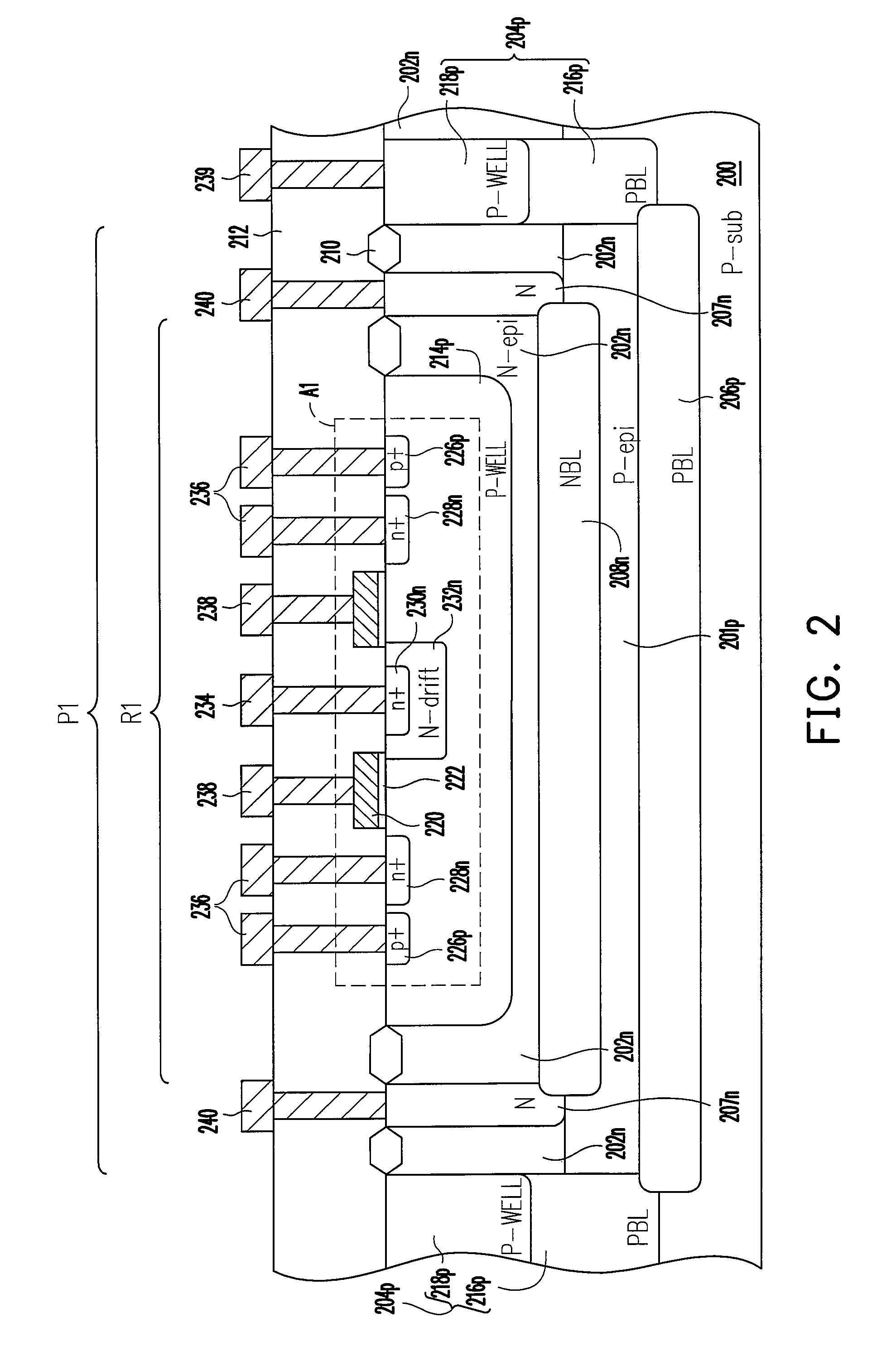Complementary metal-oxide-semiconductor transistor for avoiding a latch-up problem
a semiconductor and metal-oxide-semiconductor technology, applied in the direction of semiconductor devices, electrical devices, transistors, etc., can solve the problems of high-voltage devices that cannot operate normally, latch-up problems, and limited input voltage of devices, so as to achieve the effect of extending the input voltage rang
- Summary
- Abstract
- Description
- Claims
- Application Information
AI Technical Summary
Benefits of technology
Problems solved by technology
Method used
Image
Examples
first embodiment
[0032]FIG. 2 is a schematic cross-sectional view of a semiconductor device according to a first embodiment of the present invention.
[0033]Referring to FIG. 2, the semiconductor device of the present invention includes a substrate 200, a first epitaxial layer 201p, a second epitaxial layer 202, a first sinker 204p, a first buried layer 206p, a second sinker 207n, a second buried layer 208n and an active device A1. According to an aspect of the embodiment, the semiconductor device further includes but not limited to an isolation structure 210, a dielectric layer 212, a well region 214p, and interconnects 234, 236, 238, 239 and 240. The active device A1, for example, is comprised of an HVMOS transistor including LDMOS transistors. The active device A1 includes a gate 220, a gate dielectric layer 222, doped regions 226p, 228n, 230n and 232n. Further, as shown in FIG. 2, the conductive types of the foregoing elements are labeled in FIG. 2 as P-sub, P-epi, N-epi, N, PBL, NBL, P-WELL, n+, ...
second embodiment
[0040]FIG. 3 is a schematic cross-sectional view of a CMOS transistor according to a second embodiment of the present invention. For simplification, only those different from the first embodiment are to be illustrated below.
[0041]Referring to FIG. 3, the CMOS transistor includes a first transistor and a second transistor A2. According to the present embodiment, the first transistor may be, for example but is not limited to, equivalent to the foregoing active device A1, e.g., a HVMOS transistor, and the second transistor may be, for example but is not limited to, a HVMOS transistor. In other words, the first transistor and the second transistor A2 can be any metal-oxide-semiconductor transistors. Furthermore, the CMOS transistor, for example, includes interconnects 318, 320, 322, 324, 326, and 328 disposed in the dielectric layer 212. However, it is to be noted that the foregoing is for the purpose of illustration only, and it is not intended to limit the scope of the present inventi...
PUM
 Login to View More
Login to View More Abstract
Description
Claims
Application Information
 Login to View More
Login to View More - R&D
- Intellectual Property
- Life Sciences
- Materials
- Tech Scout
- Unparalleled Data Quality
- Higher Quality Content
- 60% Fewer Hallucinations
Browse by: Latest US Patents, China's latest patents, Technical Efficacy Thesaurus, Application Domain, Technology Topic, Popular Technical Reports.
© 2025 PatSnap. All rights reserved.Legal|Privacy policy|Modern Slavery Act Transparency Statement|Sitemap|About US| Contact US: help@patsnap.com



